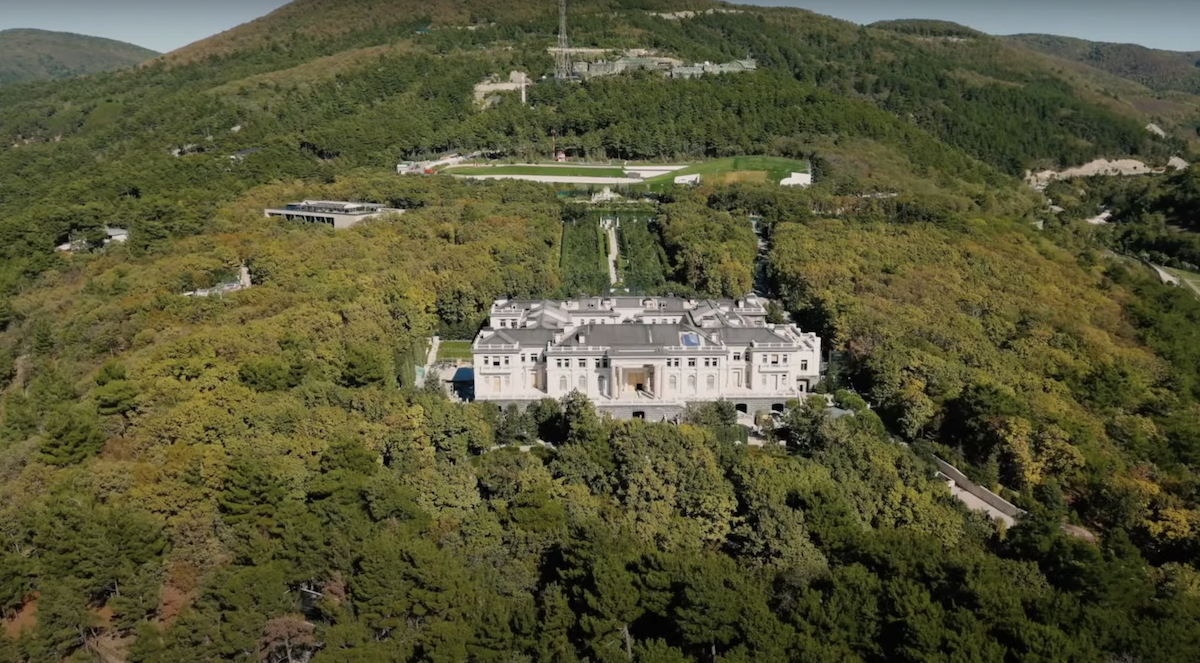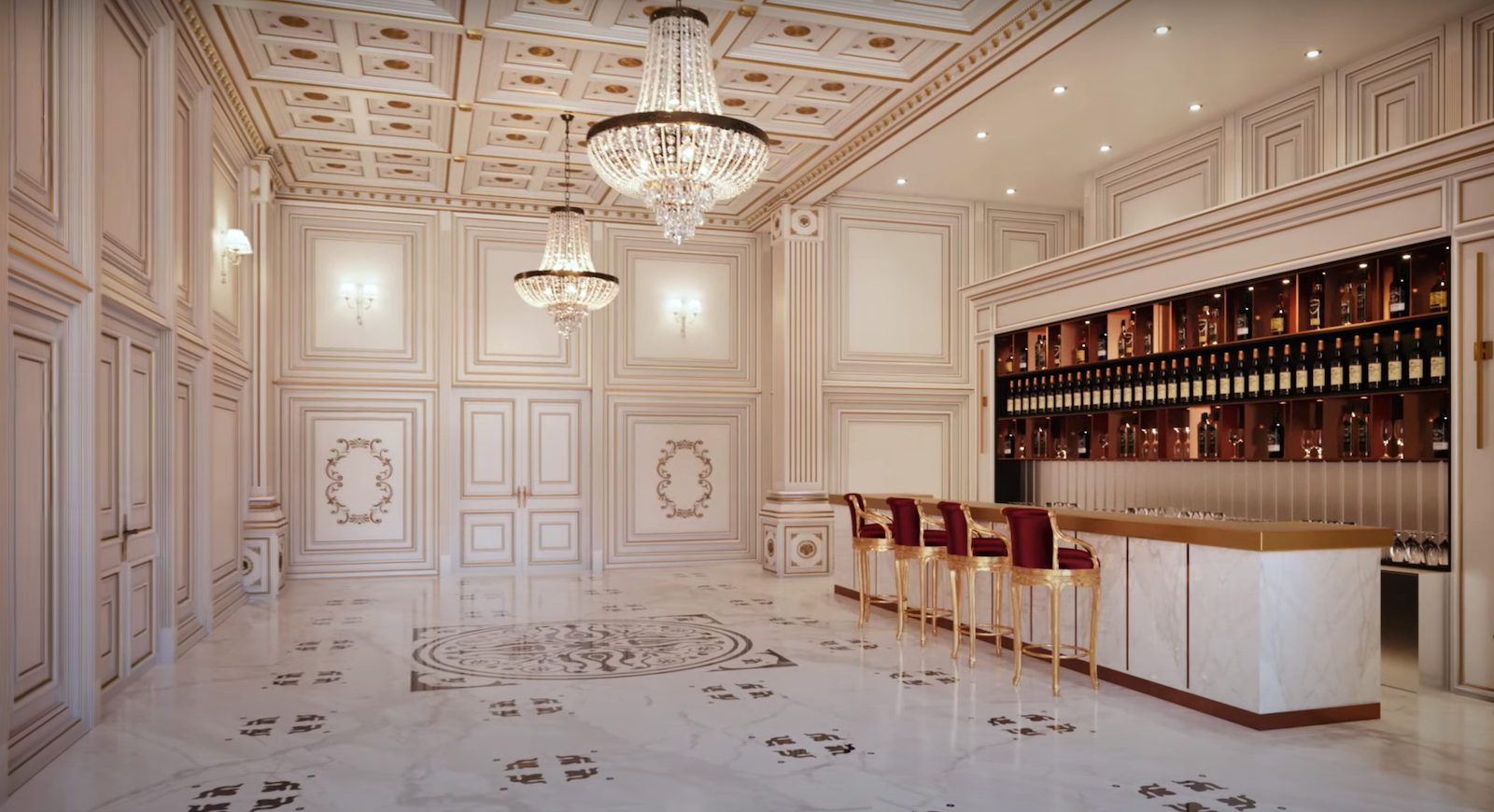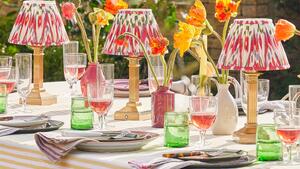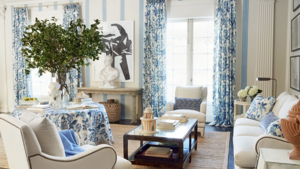It’s a high-stakes game of political brinkmanship, playing out on the international stage. In one corner is an authoritarian leader, beset by charges of corruption and looking to tighten his grip on power. In the other, a jailed reformer hoping to ignite an uprising after narrowly surviving an assassination attempt. The latest salvo fired in this life-or-death struggle? A home tour.
A quick primer for those who haven’t been following the international news: Last summer, Russian opposition leader Alexei Navalny, one of President Vladimir Putin’s fiercest critics, was poisoned with a deadly nerve agent. Navalny survived. After completing a lengthy recovery in Germany, he returned to Russia last week, where he was promptly arrested and put in prison. Less than 24 hours later, he fired back, releasing a scathing 113-minute video, Putin’s Palace, on YouTube. Intended to energize a mass protest on the streets of Russia this weekend, it has been viewed 45 million times and made headlines around the world.
The video—it’s a documentary, really—is a comprehensive look at Putin’s rise to power and the corrupt system that keeps him there. But at its core, it’s an investigation of a secret estate on the coast of the Black Sea purportedly belonging to the Russian president. (Putin denies he owns it, but Navalny presents convincing proof to the contrary.)
The estate is breathtaking in its opulence. Thirty-nine times the size of Monaco, it encompasses several vineyards, an oyster farm, an “aquadisco” (whatever that is), and an underground hockey rink. Using leaked architectural plans and aerial photography, Navalny and his team re-create the central residence as a digital rendering, taking viewers on a simulated walk-through of Putin’s marble-decked cocktail lounge, private theater, hookah lounge, and 2,800-square-foot-bedroom. It’s an episode of Open Door, pitched as political satire.
All told, Navalny pegs the cost of Putin’s Xanadu at over $1 billion—all of it siphoned from state-owned industries overseen by his cronies. It’s a jaw-dropping example of unchecked corruption married to an insatiable appetite for opulence. It’s also a remarkably effective piece of political persuasion that weaponizes a politician’s home. In that, Putin’s Palace joins a long tradition.
Probably the most famous example of a politically explosive home is Versailles. The estate, once a source of pride for the French, eventually came to represent the excesses of the monarchy, as Louis XIV spent vast sums of taxpayer money to build Roman baths, a private zoo and the famous hall of mirrors while his people starved. In the latter half of the 18th century, pamphlets documenting the extravagances of Versailles were used to stoke the anger of an impoverished people—anger that boiled over into revolution.
However, you don’t have to look too far abroad or too deeply into the history books to come up with examples of the phenomenon. Just this month Joe and Jill Biden were lambasted in the tabloids when documents emerged indicating they intended to spend $1.2 million on White House bathroom renovations. In 2018 it was revealed that former HUD Secretary Ben Carson’s office had spent $31,561 on a dining room set—a scandal that almost cost him his job.
The home is a particularly effective venue for political attack. By design, what happens at home is private and therefore—spun by a deft opponent—secret. A politician who wears a diamond watch in public will catch some flak, but if it’s revealed that the same politician has been using a diamond-encrusted fork behind closed doors, well, that’s another story.
Home-as-propaganda is also particularly good at robbing its target of a certain kind of dignity. To imagine a politician at home—even a normal home!—is to think of them just sitting around, watching TV, eating, maybe taking a shower. Imagining Putin in pajamas, lounging on a custom brocade velvet sofa or playing video games (yes, his palace has a full arcade) not only makes him seem corrupt, but comical and soft.

Designers will likely watch much of Putin’s Palace with the same shock as the average viewer. The video reveals a level of opulence so grandiose that most won’t find too many parallels with their own portfolio. There’s also a kind of comfortable distance in Putin’s terrible taste. The cheesy Italianate architecture, the Louis XIV everything, the neon hookah lounge with a retractable stripper pole—it’s easy to brush it all aside as the nutty whims of a crazed despot. But it’s worth wondering how we’d feel if Putin had a fondness for Axel Vervoordt and had spent the same amount of money acquiring tasteful minimalist classics.
It’s also worth noting that, while most clients aren’t splurging on underground hockey rinks, not all the indulgences in the film will be unfamiliar to designers. As Navalny ticks off a list of over-the-top expenses, he eventually arrives at furniture purchased from Italian makers—including a sofa that costs just over $20,000. Yes, that’s expensive. But in the world of high-end design, it’s not unheard of. An opulent home theater? A luxury, for sure, but certainly you’ll find plenty of them in the pages of Architectural Digest.
Indeed, it’s striking how much certain segments of Putin’s Palace resemble a “normal” piece of design content. There are swooping aerial drone shots, crisp digital renderings, and even moments that capture the home’s personalized special features, like a case where Putin purportedly keeps a collection of toy race cars he’s fond of. The film is a sobering reminder that much of what designers encourage their clients to invest in—bespoke furniture, custom built-ins, playful indulgences—can be pitched as over-the-top excess without too much spin.
It’s also a reminder of the occasionally fraught relationship between interior design, ethics and politics. Designers generally need affluent clients to do their best work. Where that money comes from can be complicated. Design’s first icon, Elsie de Wolfe, famously traveled in the upper echelons of society without being too particular about whom she rubbed elbows with. At a 1933 Easter celebration in Rome, she was quoted as saying “only Mussolini and Jesus Christ could stage a spectacle like this,” and posed for a picture giving the fascist salute.
Of course, de Wolfe never decorated Mussolini’s house. But someone did.
Homepage photo: A marble foyer with bar featured in the video Putin’s Palace | Alexei Navalny/YouTube





























